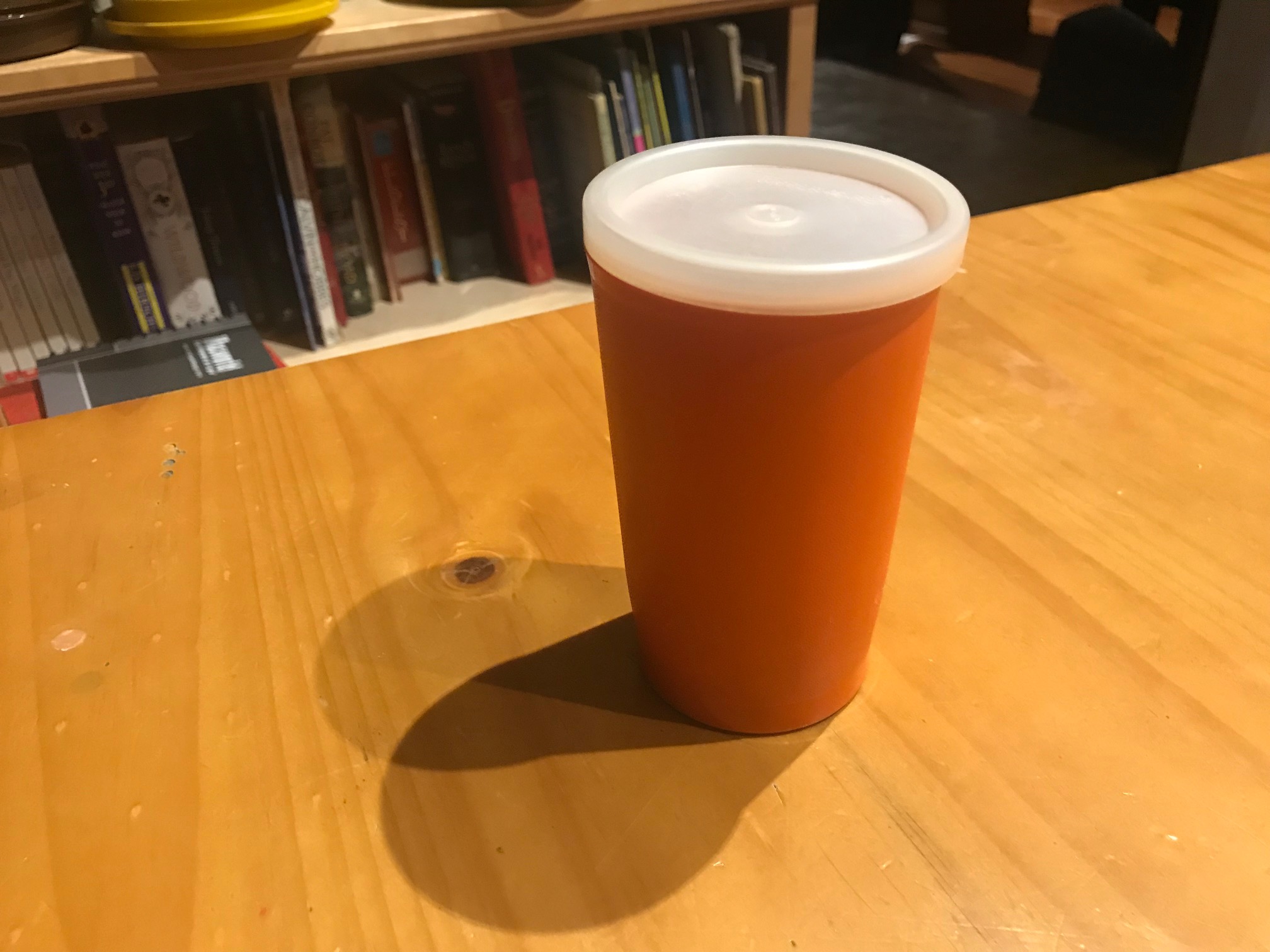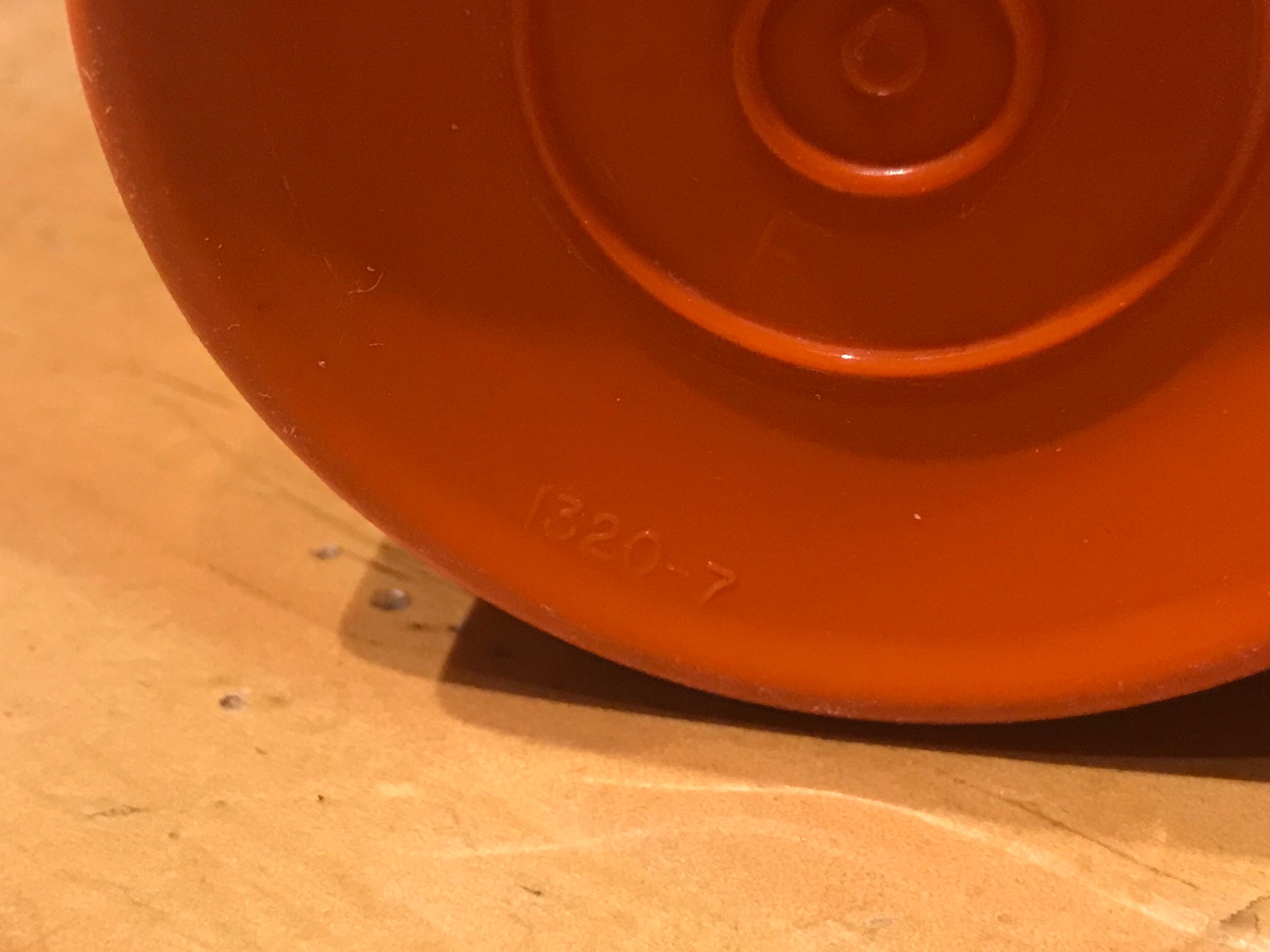Vintage Tupperware ORANGE cup: 3,270 ppm Cadmium + 1,058 ppm Mercury (both are extremely poisonous to humans)
 To read details about the concern for toxicants in vintage Tupperware products, I encourage you to read my original post on the subject here (and – if you have time – please also read all of the comments and responses on that post for the full conversation.) Thank you! Scroll down to see all of the images for the item picture here (with test results reported below). The images include close ups of the product number on the item pictured.
To read details about the concern for toxicants in vintage Tupperware products, I encourage you to read my original post on the subject here (and – if you have time – please also read all of the comments and responses on that post for the full conversation.) Thank you! Scroll down to see all of the images for the item picture here (with test results reported below). The images include close ups of the product number on the item pictured.
To see more vintage Tupperware products I have tested, click on the links below (these will be live as soon as each of the posts is up!)
- Yellow Vintage Tupperware
- Orange Vintage Tupperware
- Brown Vintage Tupperware
- White Vintage Tupperware [not live yet]
- Green Vintage Tupperware
When tested with an XRF instrument the cup pictured here had the following readings:
- Lead (Pb): Negative / Non-Detect (ND)
- Cadmium (Cd): 3,270 +/- 30 ppm
- Mercury (Hg): 1,058 +/- 20 ppm
- Arsenic (As): Negative / Non-Detect (ND)
- Barium (Ba): 4,949 +/- 84 ppm
- Chromium (Cr): 282 +/- 50 ppm
- Zinc (Zn): 417 +/- 13 ppm
- Copper (Cu): 25 +/- 9 ppm
- Nickel (Ni): 15 +/- 7 ppm
- Bismuth (Bi): 7 +/- 3 ppm
- Vanadium (Va): 2,839 +/- 175 ppm
- Titanium (Ti): 2,649 +/- 232 ppm
Other metals not listed were not detected with the XRF in consumer goods mode. Tests were done for a minimum of 2-minutes and confirmed multiple times. The above numbers represent one specific test results set from one single 2-minute reading (not an average of multiple tests or similar.)
Cadmium is a known carcinogen that is often found in red or orange cookware (plastic, metal, ceramic, glass). Please click this link to read more about Cadmium toxicity. The amount of Cadmium in this bowl is quite concerning (and, I think we all know how toxic Mercury is!)
The consideration in finding toxicants (specifically metals including Lead, Mercury, Cadmium and Arsenic) in vintage Tupperware products is two-fold:
- For those who are readers on my blog and NOT Tupperware users, you may not realize that these 40-plus-year-old products are still in high-frequency regular use in homes across
America. Just because they are vintage does not mean they are not in daily use today – they most definitely are, as confirmed by some of the comments (and I could have perhaps guessed, given the frankly unbelievable popularity of my original post on Facebook — which has now been shared more than 2,800 times and reached over 94,000 people in just about 24 hours [click the image here to read some of the hundreds of comments on this post on Facebook ]!
- It is my understanding that common lore has supported the idea that these dishes should be considered “microwave safe”, even though they are made of plastic. This means food is being heated in the dishes and that, combined with the potential use of acidic foods in these dishes gives me quite a concern for potential leaching — especially over time…in dishes that (one reader told me) came out about 1972. Specific acidic foods of concern would include lemon juice (pretty much any juice, really), vinegar, tomato sauce, soups, etc…
Continue reading below the image.
As alway, please let me know if you have any questions. I will do my best to answer them personally although it may take a while due to the increased traffic on my blog.
Thank you for reading and for sharing my posts. I am not yet covering the costs of my Lead poisoning prevention advocacy and consumer goods testing work. If you are in a position to make a contribution in support of this work, please click here for my GoFundMe link, or click here if you would like to contribute via PayPal. I can’t thank you enough for your support in this way.
Never Miss an Important Article Again!
Join our Email List











If we have any old Tupperware we are concerned about and want to discard it, what should we do with it?
Hi Sue, thank you for commenting. Here’s my post about that question as it pertains to all things that might have Lead:
https://tamararubin.com/2013/11/what-should-i-do-with-my-lead-contaminated-dishes-to-toss-or-not-to-toss/
Tamara
Hi Tamara,
I was wondering if you have tested any of the tupper toys? I have three sets of mini tupperware that were marketed to children, a cake one, a pitcher and glasses and a tea set. They have mini colored plates, bowls and cups.
There are also toys like the Noah’s arc, school bus, open/close blocks and open/close abc books.
Please let me know. Ifyou havent I have some of these items I could donate for testing. I even have many of the original boxes they came in that I could take pictures of.